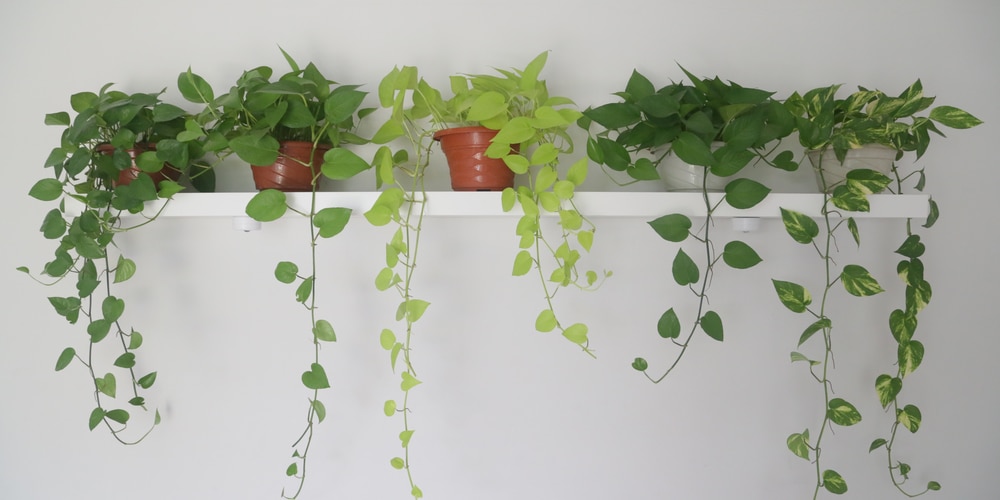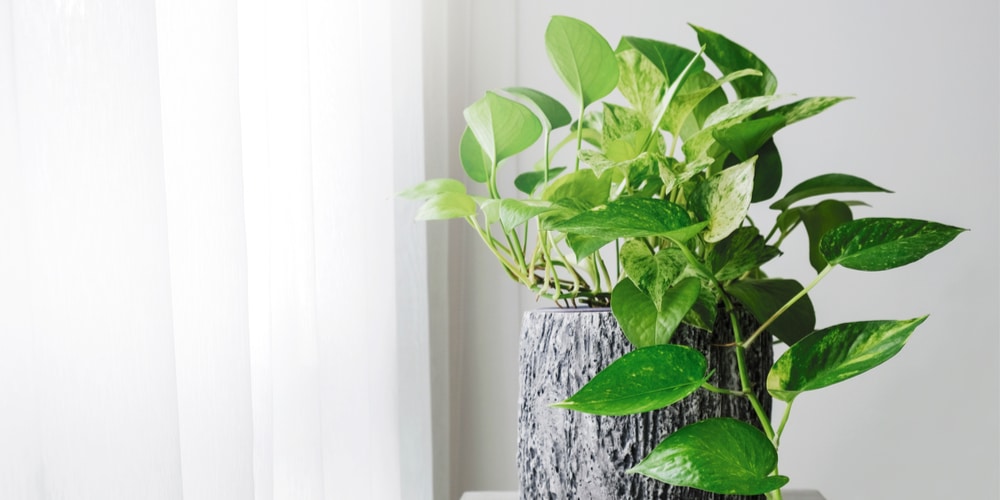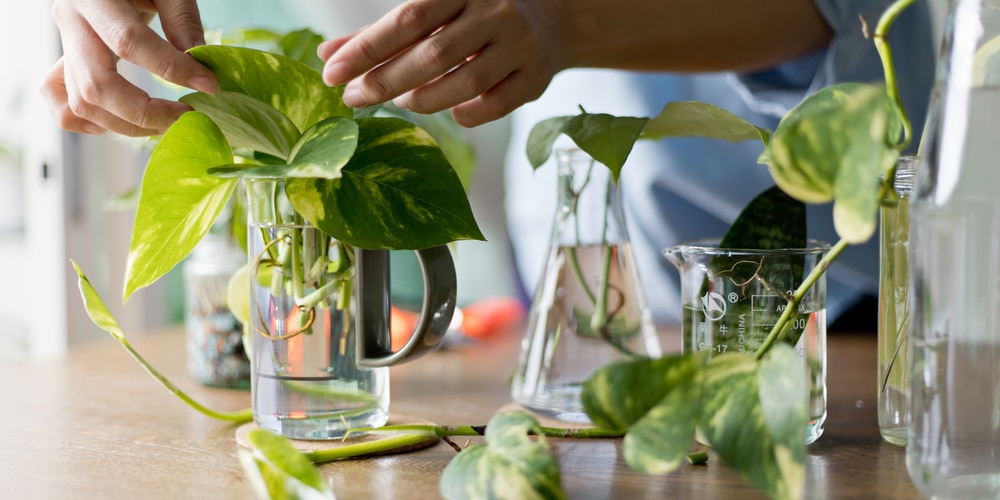Indoor Devil’s Ivy is a trendy and natural statement piece that goes well anywhere in the house. If you’ve been on the fence lately on whether or not you should keep one as a houseplant, then we recommend you read on further.
Is Planting Devil’s Ivy Indoors a Good Idea?

Devil’s Ivy, sometimes called pothos or golden pothos is a trailing vine plant that originated in French Polynesia. Devil’s Ivy and indoor space are actually a match made in heaven as long as there’s enough bright light in the room.
One of the best ways to grow a golden pothos plant is indoors, where it can get protection from direct sunlight and scorching heat. It loves warmth and thrives in tropical conditions, but pothos will adapt quickly to room temperature and relative humidity.
Caring for devil’s ivy indoors is not only a good idea, but also recommended for those who want an easy-care houseplant that has an interesting foliage and growth habit.
The green-yellow variegated leaves are as attractive to the eye as any flower, and you can train the vines to cascade down from above, or upwards and along with vertical structures with the help of a long and thin pole.
Also, you won’t have to water your Devil’s Ivy plant that much as compared to when it’s outside. It will be happy when you look at them now and then but pothos can still thrive even with neglect.
How to Care for a Devil’s Ivy Indoors
Devil’s Ivy will prove to be near indestructible as long as you don’t overwater and give it sufficient light.
Those who grow golden pothos will be in for a pleasant surprise- devil’s ivy can grow quickly (even indoors) to several feet per year. If you don’t want long and trailing leaves then you can simply cut off sections and turn them into new devil’s ivy plants.
Aside from providing a natural splash of color, Devil’s Ivy is a known air purifier that can improve your home’s air quality.
Indoor Devil’s Ivy Growing Tips
Here are 3 tips to grow a Devil’s Ivy indoors
Bright and Indirect Light
The number one requirement that a devil’s ivy plant needs from you is a spot that gets bright and indirect light. It can be beside a window or a foot or two away from it, or anywhere near a glass door. The more natural light it can get, the more vibrant the foliage and the faster your plant will grow.
While it’s true that Devil’s Ivy can survive in low-light conditions, it’s not a recommended or sustainable way to grow the plant. The color of the leaves will dull and appear faded, then become yellow, which should serve as a warning sign to move it somewhere brighter.
Water Sparingly
It’s worth noting that devil’s ivy is perfectly fine sitting in dry soil. The plant doesn’t need that much water, especially if you plant them indoors. Indoor potted soil tends to dry out for a longer time, and pothos are fairly tolerant of drought conditions.
Misting with water or increasing humidity in a room are welcome additions but aren’t really required.
A good rule of thumb when watering Devil’s Ivy is to give it a deep drink once a week for small to medium pots, and once every two or three weeks in large pots. During hot days and when the windows are open, give your plant more. Don’t water if you see the top soil is moist.
Soil and Fertilizing Needs
What makes devil’s ivy such a joy to grow as a houseplant is its tolerance to a wide variety of media and environmental conditions. You can use any extra soil lying around the garage or garden and the plant will be able to take it.
However, it’s recommended that you use a well-drained garden mix that’s amended with coco peat or peat moss for the best results.
Make sure that the pot drains well so the devil’s ivy’s roots won’t be waterlogged and suffer from root rot.
Fertilization is optional as well and not needed each year. You can apply a slow-release balanced fertilization, or a liquid fertilizer when you see the leaves becoming a bit pale and stunted growth.
Related Article: How Fast Does Devils Ivy Grow?

